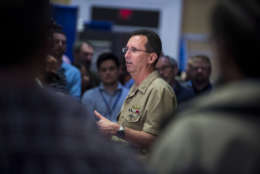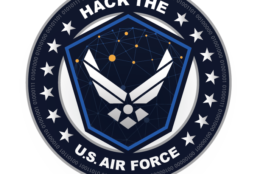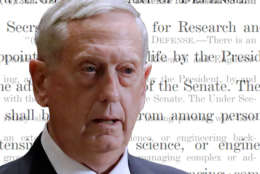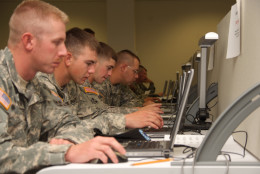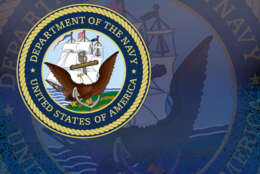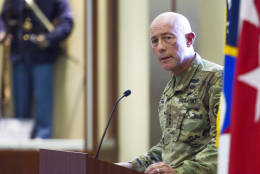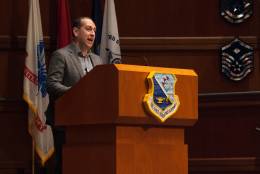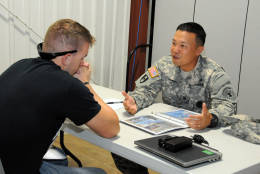On DoD Podcasts
-
The Navy is developing a new framework that will determine how it administers its technology development process. The goal, the chief of Naval research tells Federal News Radio, is to "impedance match" each stage of the acquisition system with the pace of technology.
June 22, 2017 -
The Navy is testing a new evaluation system that it says will be more objective, deliver greater fidelity in measuring sailors' performance. The end goal is to use the scores to help inform servicemembers' compensation packages.
June 01, 2017 -
In this week's edition of On DoD, Peter Kim, the Air Force's chief technology officer, Alex Rice, the CTO at HackerOne, and Reina Staley, the chief of staff of the Defense Digital Service join is to talk about the latest of DoD's bug bounties: Hack the Air Force. We’ll also talk about changes in how the Army buys cloud computing services as part of a broader effort to shut down expensive, government-owned data centers.
April 26, 2017 -
A new report from the Center for a New American Security finds females make up an increasing percentage of the national security workforce, but less so in leadership positions.
April 24, 2017 -
The Navy is in the midst of a revamp of its Innovation Cell, the project it launched two years ago with the objective of speeding new technology through the acquisition process in under a year while living completely within the government’s existing acquisition policies.
March 28, 2017 -
In part two of a special report: Defense Acquisition at a Crossroads, Federal News Radio examines the challenges the Defense Department will face as it implements numerous Congressional acquisition reforms, many of which it didn't ask for.
March 01, 2017 -
The Pentagon’s internal improvement plan, known as Better Buying Power, coincided with several consecutive years of declines in the rate of cost growth for the Pentagon’s major weapons systems, from more than 9 percent in 2011 to 3.5 percent in 2015, the lowest level since 1985.
February 28, 2017 -
In November, when Army officials decided to launch the service’s first-ever bug bounty, one of the key questions they wanted to answer was whether sensitive personnel records were vulnerable to theft by hackers via the…
February 01, 2017 -
Given enough attention and commitment from the Pentagon’s top leadership, the next administration ought to be able to implement enough business reforms to wring billions of dollars a year out of the Defense Department’s budget, said Robert Hale, who managed DoD’s finances for five years from 2009-2014.
December 15, 2016 -
When Rear Adm. Matt Winter, outgoing Chief of Naval Research, looks back on his career at the Office of Naval Research, the thing he is most proud of isn’t a new technology or capability. It’s…
December 07, 2016 -
The Army Reserve’s new leader says it’s time for a fresh look at the map so that his component of the Army can make the most of its ability to harness the skills its citizen-soldiers get from their civilian jobs.
November 17, 2016 -
Ray Mabus became the longest-serving Navy secretary since Josephus Daniels, Woodrow Wilson’s secretary during the first world war.
November 10, 2016 -
The Air Force is standing up a new human capital analytics office, hoping to make better use of the data it already has in order to help solve ongoing recruiting and retention challenges.
October 20, 2016 -
The Army closed out the fiscal year that ended a little over a week ago having met its recruiting goals for the first time in five years.
October 10, 2016 On this week’s edition of On DoD: Most service members and U.S. citizens deployed overseas will have to account for the inherent delays involved in a two-way mailing process to make sure their ballots are counted…
September 28, 2016

